Conference Program
Perspectives on the deployment of MASS
Market insights into autonomous maritime systems: an industry survey
 Hans-Christoph Burmeister
Hans-Christoph BurmeisterHead of department
Fraunhofer CML
Germany
Based on an industrial survey among executives or senior managers of 52 companies, the following insights into the currently evolving market of autonomous maritime systems (AMS) are given: the current status of the AMS market; the active players and driving subsegments in the AMS domain; how European industrial players perceive the market. Most responses come from shipping, supplier and port segments covering active and passive companies with regard to AMS. The results are a synopsis of a recent market study commissioned by the German Maritime Centre.
Pro-innovation approaches for testing and assuring MASS
 Andre Burgess
Andre BurgessAssured autonomy program lead
National Physical Laboratory
UK
With an international non-mandatory goal-based MASS code due in 2025, the relevant technical enablers must be in place to deliver the adoption of MASS at the scale where the full benefits can be derived. The UK Maritime Autonomy Assurance Testbed (MAAT) program follows a data-driven and evidence-based approach to help develop the technical capabilities and pro-innovation standards to enable the deployment of maritime autonomous technologies globally. This talk will share the latest research activities being conducted with international partners, including data standards and metrics for situational awareness, and a common test scenario definition language and taxonomy/definition for operating conditions and system behaviors.
MASS and the emergence of maritime intelligent transportation systems
General manager
Norwegian Forum for Autonomous Ships
Norway
Intelligent transportation systems (ITS) are most used in relation to road traffic. ITS include concepts like traffic monitoring and control, connected, cooperative and automated mobility (CCAM), and advanced automated and autonomous cars. Many of these concepts are already available in ships, and autonomous shipping is rapidly developing into real business models. This presentation will go through the different ITS concepts and show how the maritime sector is in many ways ahead of the road sector. It will also discuss why we need a stronger integration between road and maritime ITS and how this can be achieved.
Highly automated and remote-controlled vessels from an integrator's perspective
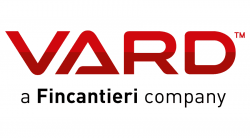 Ronny Tomren
Ronny TomrenVice president remote and digital
Vard Electro
Norway
Highly automated and remote-controlled vessels have been making news in academia and research, but almost unnoticed made it into commercial application. This resonates in every single aspect of building a ship, from design to delivery. Remote control constitutes a step-change in complexity over mere remote monitoring as it puts up a new set of requirements regarding availability, resilience, safety and security for virtually every system on board. This redefines shipbuilders towards a active role taking ownership of the technological, regulatory and commercial roadmap alongside its customer. This presentation will share insights from projects on how this could work.
Embracing and navigating the challenges and opportunities in Shipping 4.0
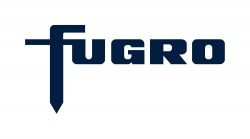 Ivar de Josselin de Jong
Ivar de Josselin de JongDirector strategy and commercial
Fugro
Netherlands
The speech will focus on the challenges and opportunities the shipping and maritime industry is facing in embracing the complexities around further maturation of the maritime remote and autonomous ecosystem in the middle of the fourth industrial revolution. Challenges like safety, capability, reliability, compliance and risk control are discussed against opportunities in digitalization, AI and machine learning but also in future workforce diversity and the welfare/work-life balance of maritime personnel. By exploring these challenges and opportunities, the speech aims to provide insights into how the maritime industry can successfully navigate the complexities of implementing autonomous shipping.
Roadmap toward unmanned surface vehicle (USV) deployment in Malaysia
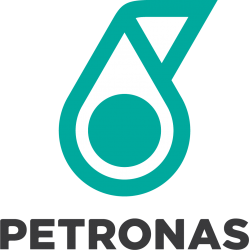 Farawahida M Monil
Farawahida M MonilPrincipal, geohazards
Petronas
Malaysia
This presentation will explore an unmanned surface vehicle (USV) deployment in Malaysia, specifically for geophysical survey operations and led by Geomatics specialists. The Geomatics team delved into USV technology to enhance traditional survey vessel operations. This session will highlight achievements to date and outline the trajectory for USV advancements in Malaysia.
Scaling up maritime autonomy: LUSV vision and key design considerations
 Chloe Yarrien
Chloe YarrienMaritime autonomous systems engineering lead
BMT
UK
The sustainability, efficiency and safety benefits of maritime autonomy are being realized at an ever-increasing pace at the workboat end of the market. Small (<24m) USVs have experienced the highest rates of development and proliferation due to their relatively inexpensive nature and aptitude for completing dull, dirty and dangerous tasks, but there are drawbacks. Scaling up vessels opens the door to a broader selection of uses and brings further benefits. This presentation discusses key design considerations and benefits of a large USV as well as key challenges and areas of development required to achieve the vision.
MEGURI2040 Stage 2: toward the social implementation of fully autonomous ships
 Masanori Muto
Masanori MutoGroup leader/senior researcher
Mitsubishi Research Institute
Japan
The MEGURI2040 Fully Autonomous Ship Project administrated by the Nippon Foundation has moved to the second stage, targeting the commercialization of fully autonomous ships by 2025. Under MEGURI2040 Stage 2, the consortium of over 50 companies (DFFAS+) in Japan will demonstrate the fully autonomous navigation system equivalent to AL4 but also work on other activities necessary for social implementation, including standardization of technologies and ensuring social (and economic) acceptance of MASS. The presentation shows the progress of the project, especially focusing on how the consortium works on use cases, insurance and legal liability issues, and the socioeconomic impact assessment of MASS.
Project reviews and case studies
The operational landscape: a status report from the frontlines
 Tom Eystø
Tom EystøCEO
Massterly
Norway
Massterly has played an important role in autonomous ship operations since its establishment in 2018. As a joint venture between Wilhelmsen and Kongsberg Maritime, Massterly combines ship management and control room operations using advanced technology to manage the complete value chain for autonomous vessels. This approach involves being part of the design, development and operational services, which ensures safety, efficiency and reliability in maritime logistics, subsea surveys and ROV operations. In this presentation, we will provide an operational status report on Yara Birkeland, Asko and Reach Subsea.
Technology development for autonomous and remotely operated ships
 Jong Jin Park
Jong Jin ParkPrincipal research engineer
Samsung Heavy Industries
Korea
This presentation will review the research of remotely operated and autonomous ship technologies being developed to reduce crew workloads. These solutions, such as CBM, E-Logbook and automatic report, have been developed and installed as one of the specifications for the ships Samsung Heavy Industries (SHI) has ordered and SHI has been developing a remote real-time monitoring and control system with connection between IAS/ICMS and the remote-control system. After intensive validation with simulation-based tests, this system has been verified and tested on actual container ships.
Optimal speed as a basis for fuel-efficient autonomy
 Ramon Sieber
Ramon SieberResearch and development engineer
Shiptec
Switzerland
Autonomy in shipping not only leads to more safety but can also save fuel. In timetable operation, the sailing speed is the significant factor in the ship's fuel consumption. Arriving just in time requires the consideration of multiple factors and is currently dependent on the experience of the captain. This presentation reviews a tool which calculates the optimal speed profile by relying on a multi-criteria algorithm and AI. The calculated optimal speed is applied to a smart-throttle lever to autonomously control the speed of the ship. In beta testing on multiple ships in the field, a fuel reduction of 13% was achieved.
Allowing unmanned ships in inland waters
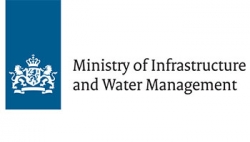 Patrick Potgraven
Patrick PotgravenProgram manager smart shipping
Ministry of Infrastructure and Water Management
Netherlands
Traditional laws were drafted in an era when unmanned sailing was not foreseen. To make unmanned sailing on inland waters legally possible, these laws must be adapted. In this process, the goal of making unmanned sailing as safe as sailing with a crew on board is the starting point. But when do we consider that a ship is operating safely enough to allow it to sail uncrewed? The Dutch Ministry has set up a rule-based judgment framework for the exemption process.
Autonomous ships on rivers and in harbors in Taiwan
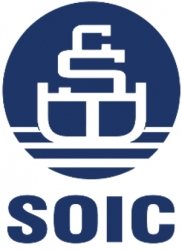 Chia-Jung (Tina) Hsu
Chia-Jung (Tina) HsuProject manager
Ship and Ocean Industries R&D Center (SOIC)
Taiwan
Taiwan has announced the Unmanned Vehicles Technology Innovative Experimentation Act in December 2018, the first of its kind in the world covering autonomous vehicles on land, at sea, and in the air. As a ship and maritime technology R&D institution, SOIC has been developing fully-electric autonomous Sightseeing Ships and a marine debris cleaning boat. The remote-control station is included. The Sightseeing Ships has carried thousands of passengers and auto-sailed hundreds of kilometers. The cleaning boat has passed the fields test phase and are participating in the harbor cleaning missions.
